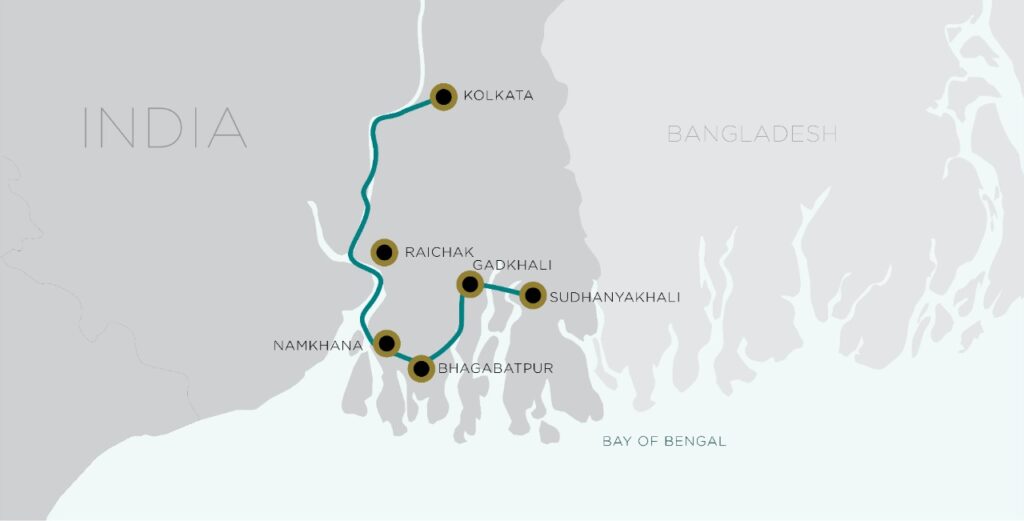Paro
Paro
After arriving & visa formalities and collection of baggage, you will be welcomed by our tour representative who will be your tour guide during your entire trip in Bhutan.
Check into your hotel in Thimphu. Free until lunch time for some rest from early morning flight, refreshment and lunch.
Afternoon, you can choose to visit any or all of the following places:-
Tachogang Lhakhang
Tachogang Lhakhang is located in Paro district, on the way to Thimphu. It was founded by Thankthong Gyelpo after he experienced a vision of Guru Rimpochhe, Amitaba and Avalokiteshvara near site. The caretakers today are said to be descendants of Thangtong Gyelpo. Inside the temple one can see the masters relics, including his walking stick.
Tashichho Dzong
The Tashichho Dzong is a Buddhist monastery cum fortress at the northern edge of Thimpu the capital city of Bhutan. The Dzong was built on the western bank of the river Wang Chu, and has historically served at the seat of the DrukDesi or the Dharma Raja of Bhutan’s government. After the kings assumed power in 1907 this post was combined with that of the king and Thimphu severed as the summer caital of the kingdom before becoming the full time capital of Bhutan.
Overnight in Thimphu.
After the breakfast we will drive to following places:
KuenselPhodrang
The KuenselPhodrang or the Buddha point isthe world’s largest sitting Buddha statue, the statue is 167 feet high. The statue is situated on top of a hill overlooking the city of Timphu, it can be accessed by road and is about 15 minutes away from the city’s center. The word Kuensel means everything is clear and from this place you will sure enjoy a great view of the Thimphu Valley on both sides. The statute will house a temple inside it, the statue and its adjoining car park and recreational center.
National Memorial Chorten
The National Memorial was built by Bhutan’s third king, H.M. JigmeDorjiWangchuck who is also known as the “father of modern Bhutan.” He wanted to erect a monument carrying the message of world peace and prosperity. However, he was unable to give shape to his idea in his lifetime due to pressures of state and other regal responsibilities.
Motithang TakinPreserve
The Motithang Takin Preserve also known as the Thimphu Zoo by many is a small natural preserve for the Takin Bhutan’s national animal. It was originally a mini zoo, but it was converted in a preserve later on as the Takin. The mini zoo contained a small number of Takin but the King of Bhutan later decreed that it was improper for a Buddhist nation to keep an animal in captivity.
Overnight at Thimphu
Post early breakfast, you will drive towards Punakha via Dochula Pass. We will stop over for tea at Dochula (3,100 m), where on a sunny day, you can get stunning views of the Himalayan ranges. The Dochu La Pass is probably the best known mountain pass in Bhutan. Located at an altitude of 3150 meter above sea level, the Dochu La Pass is about 30 kilometer away from the capital city Thimphu and the road to Punakha.On a clear day the pass offers visitors a spectacular view of the majestic eastern Himalayan Ranges.
Punakha Dzong
The Punakha Dzong or the PungtangDechenPhortang Dzong is located at the confluence of the Mo Chhu and the Po Chhu River, combine to form the Puna Tsang Chu which in turn is a tributary of the mighty Brahmaputra River. The Dzhong was constructed by ZhabdrungNgawangNamgyalWangchuck in 1638 on the exact spot as prophesized by the Guru Rinpoche some 800 years ago. According to the prophecy of Guru Rinpoche “a person named Namgyal will arrive at a hill that looks like an elephant”. And lo behold! ZhabdrungNgawangNamgyal found that the peak of the hill was in the shape of an elephant’s trunk and built the Dzong at that very spot. Another legend associated with the Dzong is that of ZowePalep, the architect of the Dzong received vision of the Dzong in his sleep. This vision got imprinted in the architects mind and enabled him to construct the Dzong without putting his plans to paper.
(Overnight in a hotel in Punakha)
After an early breakfast, we will be driving down to Trongsa. Admire the view en route the valley of Wangdiphodrang. We will drive to ChimmiLhakhangto start with. The ChimiLhakang or the ChimelLhakang is a Bhuddhist monastery located in the Punakha District of Bhutan. The monastery stands on a small hill close to the village of Lobesa and was constructed in 1499 by NgawangChoegyel, the 14thDrukpaheirarch.
ChendebjiChorten
Located 2 kilometers away from the village of Chendebji is the Chendebji Chorten, a large Buddhist Stupa. The Chendebji Chorten is a large white structure built in likeness to the famous BodhunathStupa located in Kathmandu in Nepal. The Chorten was constructed by Lama Shinda from Tibet in the 19th century AD. The Stupa is believed to have been constructed at a spot where an evil spirit was subdued by the Lama.
Trongsa Dzong
The Trongsa Dzong or the CheokhorRabdentse is one of the largest and most impressive
Dzong in Bhutan. The Dzong is located on a cliff overlooking theMangde Chu river gorge. The Dzong was built at the site of a temple that was constructed in 1543, by a Drukpa Lama. This huge multi-level fortress comprises of a series of courtyards and passageways that are built along the topography of the ridge.
Trongsa Dzong
(Overnight in a hotel in Trongsa)
After morning breakfast, we will drive towards Bumthang and visit Jakar Dzong. The Jakar Dzong is situated above the Jakar village in the Chamkhar valley of Bumthang. The Dzhong was originally a site of a monastery that was being constructed at the time of Lama NgagiWanchuck’s visit to Bhutan. According to legend during the construction of the Dzong a white bird emerged from the structure and perched itself on the site. In Bhutanese culture a white bird is considered to be auspicious.
JambayLhakhang.
JambayLhakhang was built by King SrongsenGampo of Tibet in 659 AD. The temple was blessed by Guru Rimpoche during his visit to Bumthang. It is said that Guru Rimpoche was the one who brought Buddhism to Bhutan. It was renovated by Sindhu Raja after Guru Rimpoche restored his life with his magical powers. Many believe that there is a natural lake under the temple in which Guru Rimpoche took refuge on several occasions.
KurjeyLhakhang
The KurjeyLhakhang is a monastery located in the Bumthang Valley of Bhutan. The KurjeyLakahng Temple Complex is a 30 minute hike from the JambayLhakhang temple. According to legend Sendhu Raja, the King of Bumthang was very ill and invited Guru Rinpoche the founder of Buddhism in Bhutan to give him a cure for his ailment.
Namkhenyingpogoemba:
NamkheNyingpoGoemba is located on a hill just east of the town of Jakar, the administrative center of the Bumthang district. The monastery was established in 1970 and is home to about 300 monks who are learing about the Nyingampa Buddhism.
(Overnight in a hotel in Bumthang)
After breakfast start your day excursion to beautiful lush but remote Tang valley. Visit the century old Ugyencholing Heritage Museum, which once belongs to the Royal Family of Tang valley. Lunch will be served at a farmhouse. After lunch drive back to Bumthang, on the way visit MebarTsho (Burning Lake), where some of Guru Rimpoche’s treasures were discovered in the 15th century by the famous treasure discoverer- PemaLingpa. It is a serene place to meditate.
In the evening stroll around Bumthang town and dinner at local restaurant in the town.
Overnight at a hotel in Bumthang.
After breakfast you will drive to Gangtey and visit GangteyGoemba. The Gangtey Monastery or the GangteyGoempa is an important monastery / temple associate with the Nyingmapa school of Buddhism. The Monastery is Located in the WanduePhodrangDzhongkhag in central Bhutan. The Gangtey Monastery is situate in the picturesque Phobjikha Valley, which is also renowned for being the winter home of the rare Tibetan Black Necked Cranes. The monastery was established in 1613 by PelingGyalse Rinpoche, the grandson of Trenton PemaLingpa the great treasurer discoverer.
Phobjikha valley
The Phobjikha is a wide glacial valley located in close to the Gangtey Monastery. The Phobjikha valley is the winter home of the rare Black Necked Cranes that migrate from Tibet from the arid plains of Tibet to roost in the more comfortable climate of the Phobjikha Valley. The valley is at an altitude of 2900 meters above sea level and experiences a much lighter winter as compared to the harsh extremes of Tibet.
(Overnight in a hotel in Gangtey)
After early morning breakfast, you will drive to Paro and on the way, we will visit:-
Simtokha Dzong
The Simtokha Dzong is a small Dzong located approximately 5 kilometers south of Thimphu. The Dzong is officially called the SangakZabhonPhodrang which roughly translates to the Palace of the Profound Meaning of Secret Mantras. The Simthoka Dzong is said to be the first fortress to have been built by the legendary ShabdrungNgawangNamgyal in Bhutan. Later drive to Paro, and after lunch we will visit:-
(Overnight in a hotel in Haa)
hike to Kila Nunnery (optional bike descents). Start early for the drive to Chele La Pass which (3,988m) from which on a clear day the view sweeps away to Bhutan’s second highest peak, Mt Jhomolhari(7314m). Striding out along the Edelweiss covered ridge, we pass a sky burial site. We then descend for the two-hour hike through dense rhodendron forest, possibly sighting shaggy yaks, to KilaGoemba, an ancient nunnery nestled in a craggy patch on the mountainside below. KilaGoemba is a serene retreat for 32 Anims (Buddhist nuns) who lead an undisturbed life of religious studies, prayer and meditation. Overnight in Paro.
After early morning breakfast, we will take you for a morning hike up to Taktsang Monastery, also known as ‘Tiger’s Nest’. Hanging precariously and magically from a rather steep cliff, the Taktshang monastery is a monument of genuine pride for the Bhutanese nation. It defies architectural principles to the core and amazes tourists from around the world. It is a sight to behold.
KyichuLhakhang
The Jowo Temple of Kyichu is one of the oldest temples in Bhutan. The temple was built by the Tibetan King SongstenGampo in the 7th Century AD. The KyichuLhakhang was one of the 108 temples constructed by him to subdue a demon that was terrorizing the people of the Himalayas.
The Lhakahng underwent many extensions during the ages with the last one being carried out in 1965 by the Queen Mother AshiKezangChodenWangchuck.
Rimpung Dzhong
The Paro Dzhong is probably Bhutan’s best known and most iconic Dzhong. This is probably the first building you will notice when you land at Paro International Airportand will probably be your first memory of Bhutan.
The imposing Dzhong is perhaps the finest example of Dzhong architecture existing the world today, the massive buttered walls of the fortress dominate over the valley. The Rinpung Dzhong’s names translates to the ” Fortress on a heap of Jewels “.
In the morning after early breakfast we will see you off at the Paro Airport for your onward destinations.


